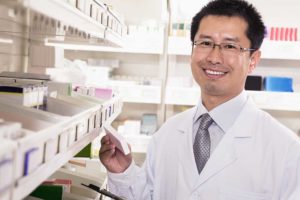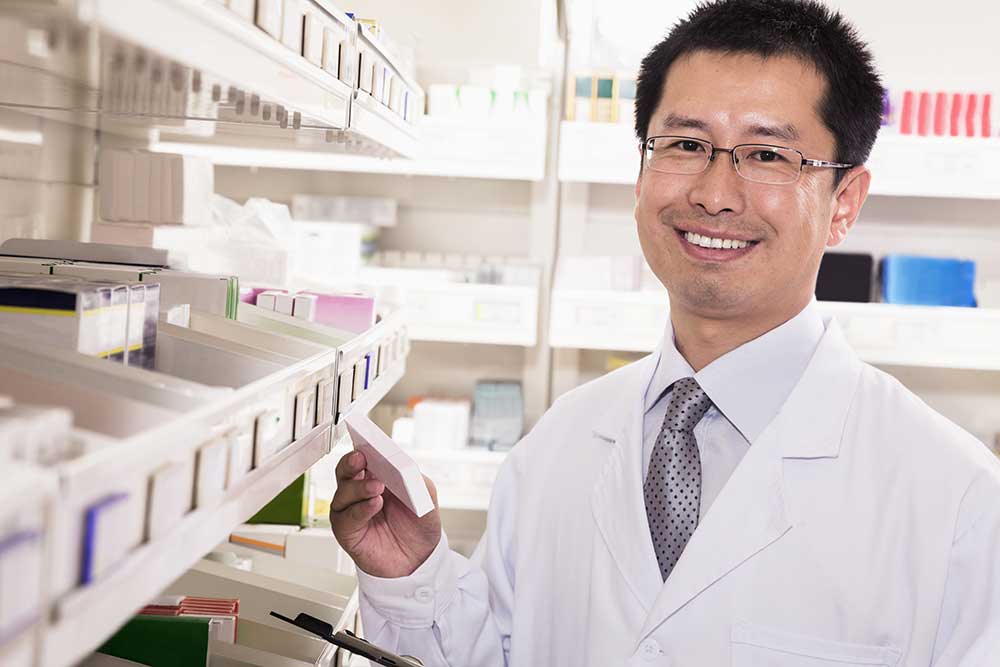Disclaimer: The information on our website is provided for general information purposes only. We make no representations or warranties of any kind, express or implied, about the completeness, accuracy, reliability, suitability or availability with respect to the website or the information contained on our website for any purpose. Any reliance on such information is therefore strictly at your own risk and we are not liable for any damages or losses arising out of or resulting from your reliance on any information contained on our website.
A pharmacist provides prescription medication and immunizations to customers. They also check the accuracy of the medication given and any possible side effects or interactions it may have with other medications the person is taking. Pharmacists also monitor the work of other staff at the pharmacy and answer customer’s medication questions. Watch a video to learn what a pharmacist does.
How to Become a Pharmacist
To become a pharmacist you have to earn Doctor of Pharmacy (or Pharm.D.) degree from an accredited college and this can take 6-8 years to complete.
Step 1: Research Pharmacy Schools
First, ensure a school’s pharmacy program is accredited in order to sit for your exams when you graduate. Next, consider how long a program will take you to complete as some programs are shorter than others. High schoolers can find some programs that allow them to apply and start in a pharmacy program and complete their Pharma.D. in 6 years. Other students earn their bachelor’s degree that includes courses in chemistry, biology, and physics.
Step 2: Prepare for Pharmacy School
No matter which pharmacy school or program you choose, these programs require you to take the foundational coursework necessary to be successful when taking your pharmacy-related coursework. Study hard in your college courses your freshmen through senior years of college and take courses such as chemistry, biology, and physics.
Step 3: Take the Pharmacy College Admissions Test
Next, you’ll need to take the Pharmacy College Admissions Test (PCAT) to submit with your application to pharmacy school. According to the American Association of Colleges (AACP) of Pharmacy, not all colleges require the PCAT but 85% do. According to the AACP, it covers writing, biological processes, chemical processes, critical reading, and quantitative reasoning. Kaplan is also the official PCAT Test Prep provider.
Step 4: Graduate and Get Licensed
Finally, you must pass your pharmacy program and that also includes successfully completing and passing your internship which demonstrates your competency as a pharmacist. Then, you must get licensed as a pharmacist in order to practice. To earn your license, you must pass two exams. The first is the American Pharmacist Licensure Exam and a second exam covers pharmacy law. Now, you are ready to work as a pharmacist.
Job Description of a Pharmacist

A pharmacist follows the doctor’s instructions on the accuracy and amounts of medication on a prescription and dispenses them to patients. They advise people about their medication, such as, interaction with other medications they may be taking or it’s side effects.
They may give counsel to a patient on issues, like, diet, exercise or other areas of concern, as well as, what supplies or equipment might be needed to treat their health conditions. A pharmacist would give out flu shots or immunizations. Part of their job is to have patient history collected and recorded and to be sure any insurance forms are completed and that these companies are cooperative in approving certain medicines for patients.
Pharmacists would oversee the work of interns or pharmacy technicians. A pharmacist can be found working in pharmacies of drug or grocery stores, as well as, hospitals or clinics. Some pharmacists work for the military or government. They normally work full-time and spend a lot of time standing on their feet.
Pharmacist Career Video Transcript
Whenever a doctor writes a prescription for a drug or treatment, a pharmacist is the person who measures out the medication and makes sure a patient knows how to take it safely. And while filling a prescription often means a visit to the local drug store or grocery store, pharmacists also work in hospitals. Typically, pharmacists spend most of the day standing at a counter, preparing and dispensing medication. They may also personalize or “compound” the medication, though that is now less common than it used to be.
Pharmacists are knowledgeable about medication ingredients and how they might interact with other medications. This is a profession that requires careful attention to detail. Making a mistake and dispensing the wrong medicine could have life-threatening consequences. Pharmacists also maintain patient records, inventory their supplies, and keep up registries of controlled drugs. Some pharmacists conduct research to develop new drugs.
Most work full-time, and since the timing of medications can be crucial, they may work nights and weekends. If you want to become a pharmacist, you’ll need to earn a Doctor of Pharmacy degree, then pass two licensure exams. For some, the demanding education and ongoing learning needed to stay current might be a hard pill to swallow, but knowing you help people get the medications they need to be healthy, can help the medicine go down.
Article Citations
Bureau of Labor Statistics, U.S. Department of Labor, Occupational Outlook Handbook, Pharmacists.
National Center for O*NET Development. 29-1051.00. O*NET OnLine.
American Association of Colleges of Pharmacy. Pharmacy College Admission Test.
https://www.aacp.org/resource/pharmacy-college-admission-test
The career video is in the public domain from the U. S. Department of Labor, Employment and Training Administration.

